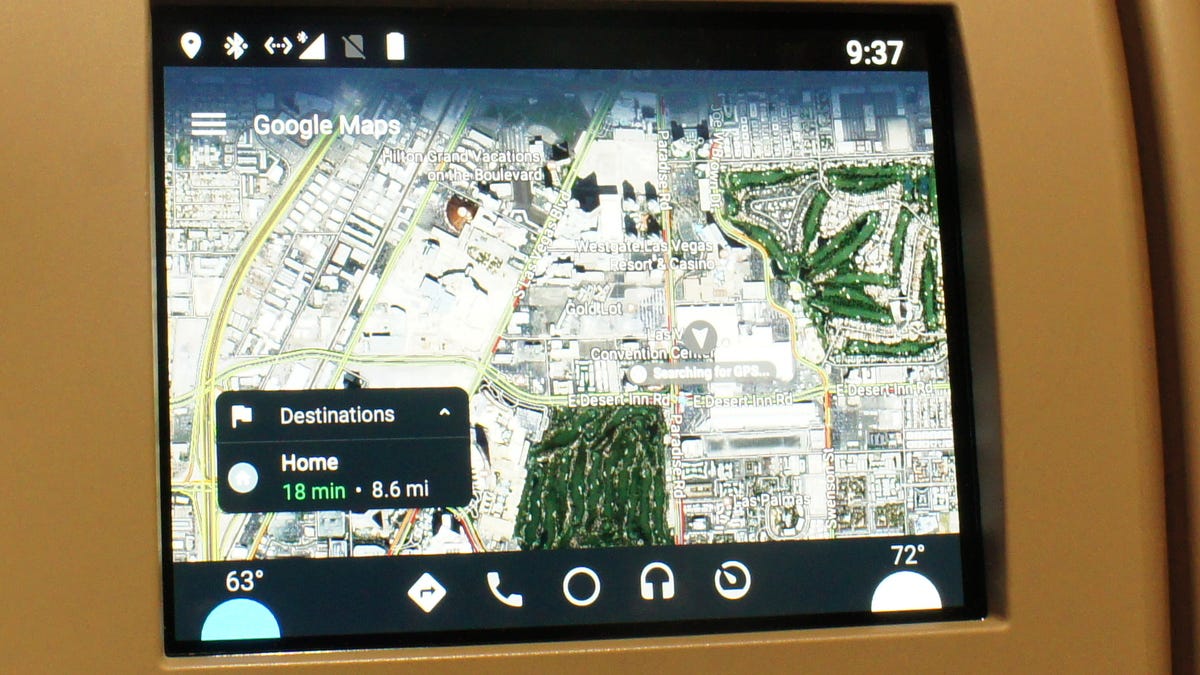Panasonic looks to Android OS for new car navigation, enterainment system
In a next-generation concept infotainment system shown at CES, Panasonic's automotive division relied on Android as the base OS.

This Android-based Panasonic head unit runs Google navigation, of course.
The software behind a car's navigation head unit may be a mystery to most people, but with Panasonic 's concept system, shown here at CES , its Android OS looks pretty obvious. The interface uses Android's tiled theme on its home page, and shows Google satellite maps for navigation.
Panasonic put the system on display during CES 2017, and highlighted its partnership with Google for the Android Nougat OS. Behind the scenes, a Qualcomm Snapdragon 820 automotive-grade chip powers the system.
The home screen on this concept infotainment system reflects that of Android Auto.
Navigation head units in cars have become commonplace, but automakers and equipment suppliers are always looking at how to keep these systems up to speed with consumer electronics, which experience much faster product cycles than cars. One way of maintaining parity would be to install powerful processors in the dashboard, with software systems that could be updated through a data connection, much as smartphones get continual updates.
Panasonic's use of Android and Qualcomm's chip allows for continual updates, so that an existing car could give its owner new features. However, updates both to apps and the core system would be tightly controlled by the automaker.
The demonstration at CES showed a system that worked with smartphone speed, and allowed quick pinching and zooming of the map screen. Audio sources included local and online streaming sources, just as Android-based phones do.
And the system need not look like Android, as an automaker could use a skin for the interface. iPhone users won't be left out, either, as the system supports Apple CarPlay.
A Panasonic spokesperson said this system will be production-ready in 2019, but would not specify any car models where it might appear.

